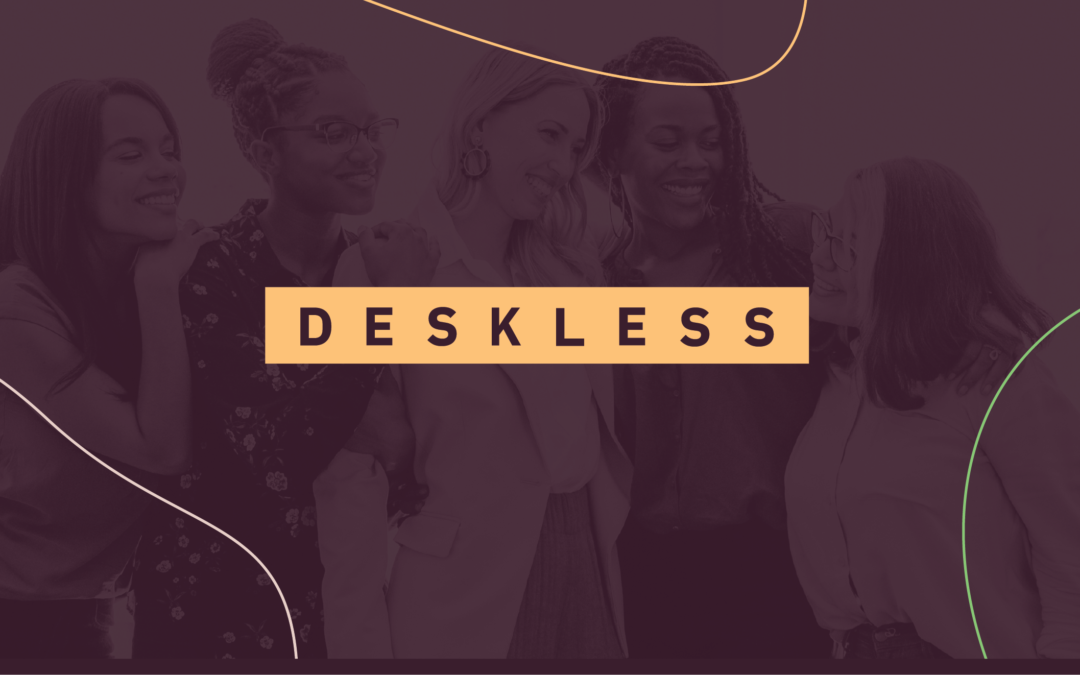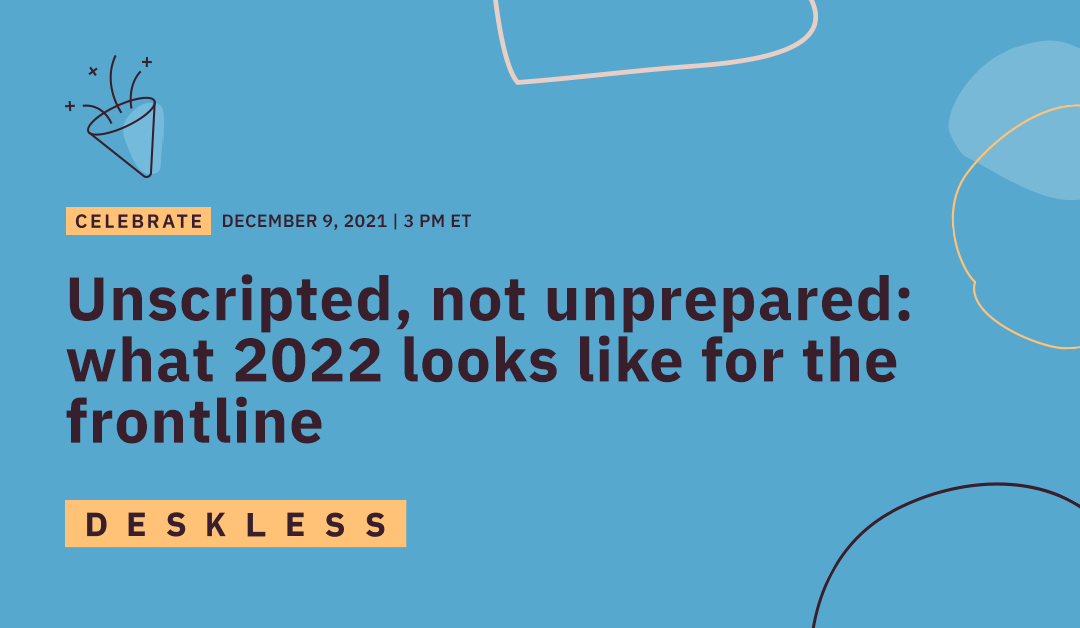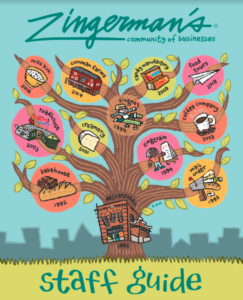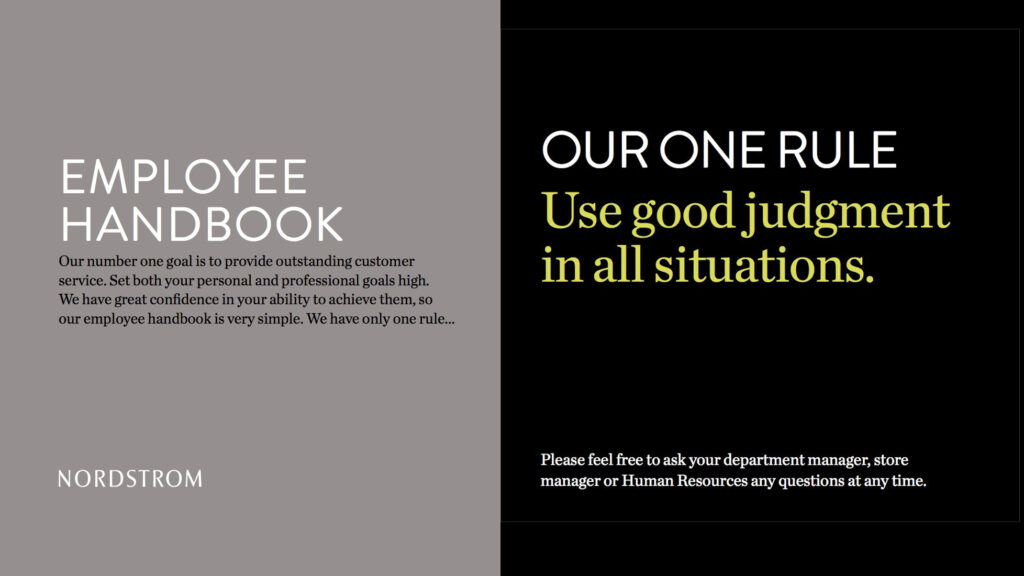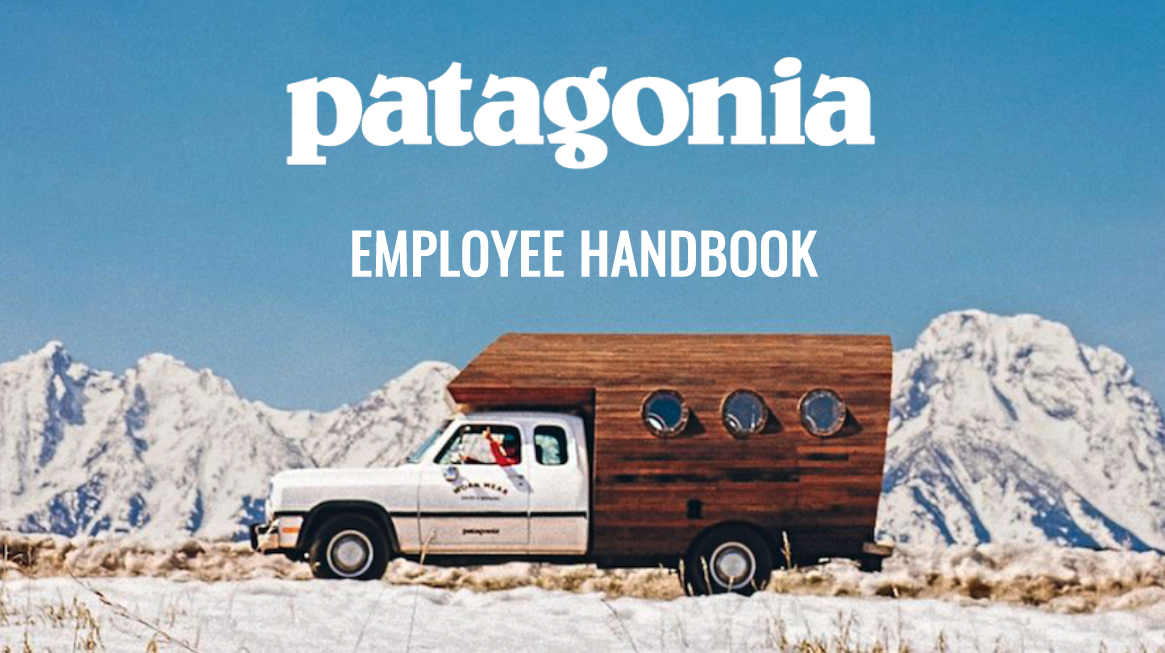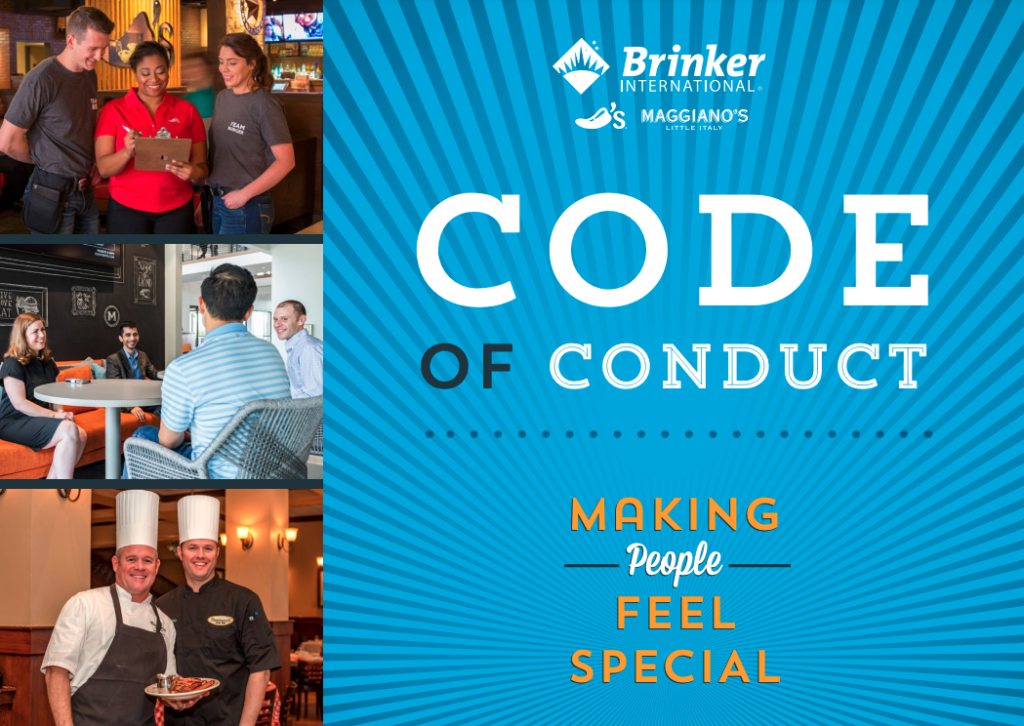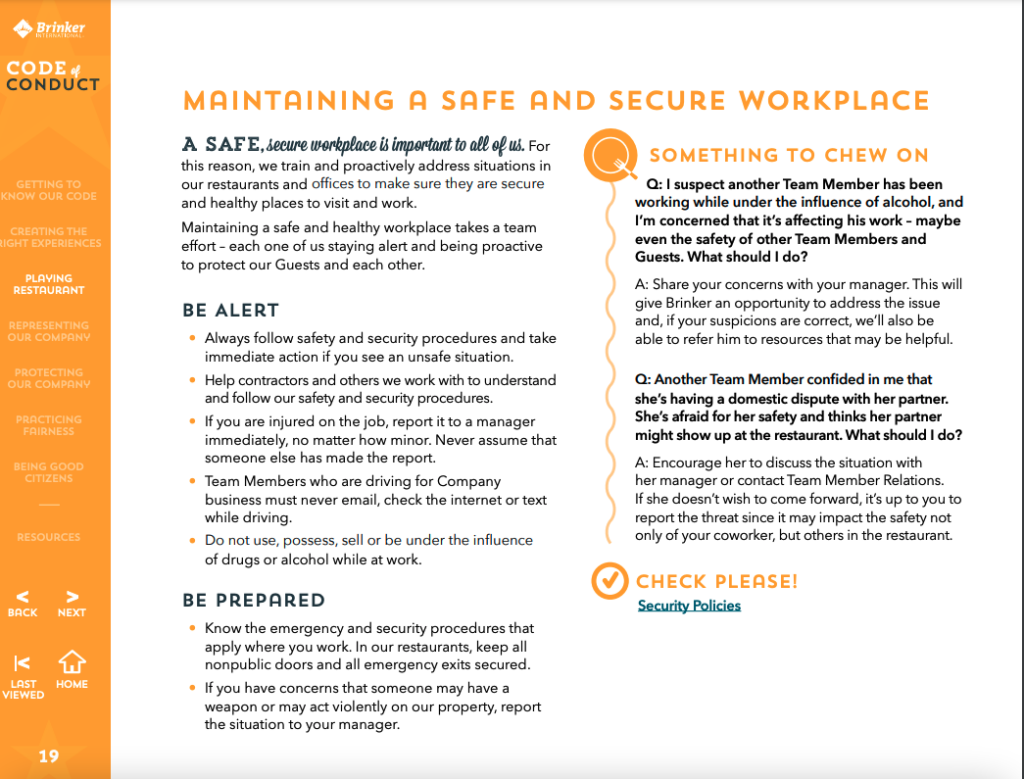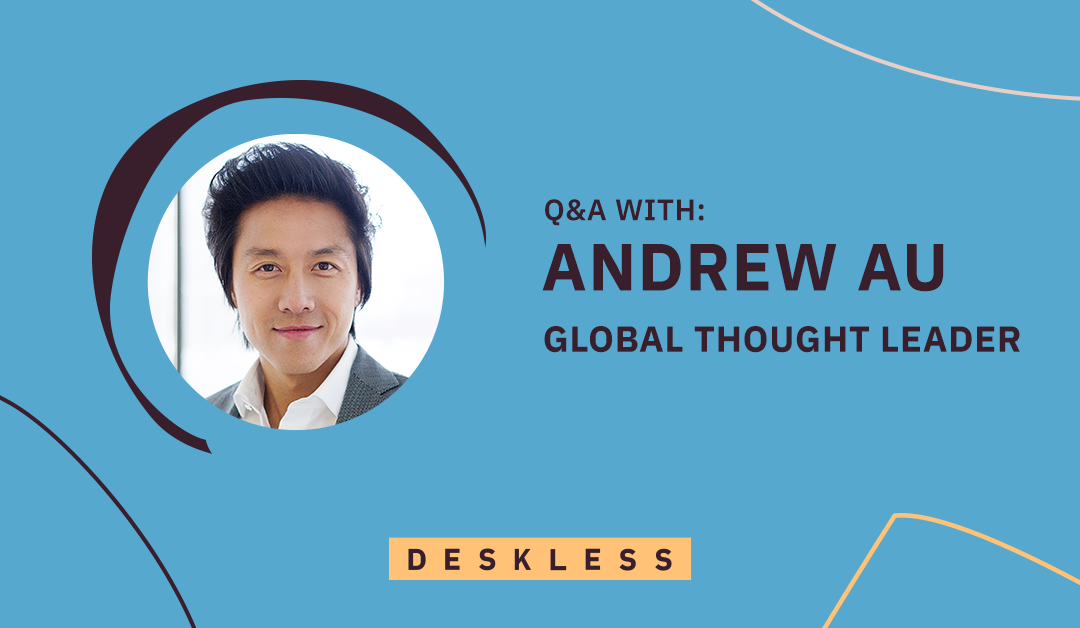
Q&A: The future of frontline technology
We’re pretty excited about 2022. It’s been a roller coaster couple of years, but the future of technology – and how it will impact frontline workforces – has never looked brighter. And to learn more, we sat down with Andrew Au!
Hailed by Forbes as a “digital transformation expert,” Andrew Au is a renowned global thought leader on digital transformation and culture change. He’s worked with such companies as FedEx, 3M, Microsoft, and countless others to navigate the “now” and prepare for what’s coming next.
So, naturally, we’re thrilled to hear what he thinks about the future of frontline technology! We sat down with Au to talk about how technology can build better human experiences, how technology will impact frontline organizations, and much more.
You call yourself a global thought leader but I’ve also heard the word “futurist” thrown around. Can you tell me more about what you do?
Andrew Au: Futurist is a word that people tend to associate me with. But I don’t identify as a futurist. Because I think that predicting the future is truly impossible. I would say I am just very, very curious about the intersection of technology and people. I think that’s ultimately what drives this whole thing.
My consultancy, Intercept Group, is divided really into two main parts. We’ve got a marketing services arm, and then we’ve got a technology consulting arm of the business. And so marketing was always the original source for this whole venture. It was always involved with big tech: Microsoft, SAP, Intuit. And so as we really immersed ourselves in that world, a lot of the things that we worked on were actually consumption.
So getting customers to consume more Cloud services, for example. And so for us to do that well, we had to really understand the business value of all of these technology services, and then why is it that people aren’t using them? Like what is actually holding people back? And so that’s what’s really spawned this whole tech consulting arm where companies come to us and say, “Hey, what are the right platforms that we need to solve these business problems?”
It sounds like a lot of what you’re doing is helping organizations see the forest for the trees. You’re taking a much bigger look at the picture than they can see themselves.
Exactly. We are looking at the outcome that we’re trying to drive. Take artificial intelligence. You don’t need artificial intelligence, you need to solve this outcome. So we help leaders stop chasing the shiny object of “We just need this tech” to focus on “What will you actually do with the tech? What problems are you trying to solve?”
And then we’re also just really plugged into the tech world. We see and work with some of the very disruptive scale-ups in this space. So we’ve got a sense of where the gaps are, and where tech is really heading. And so that’s another vantage point a lot of companies don’t have. Like they see their organization, and they think that whatever happens in their organization is the norm. But we get to see behind the scenes at everything from enterprise, government, public sector, education, retail, financial services, natural resources, professional services… We’ve got a much broader view of the topic.
A big part of your core message is that technology can build better human experiences. Can you speak to that?
So the way I see it, technology allows us to do things that were once impossible. So if you think about artificial light as a technology, you go back to the 1800s. Artificial light was a very powerful technology. It allowed us to turn night into day, and build structures where we can control daylight, and extend our workday. And it would cost us 400 times back then what it costs us today to use the same amount of light.
And if you think about that for a second, the reason why artificial light spread so quickly is that it was very powerful, but it became very cheap. And so I think that is really the path for technology. Something powerful becomes very cheap, and it becomes democratized. And it allows us to do things that we couldn’t have done before. So if you think about all of the things that we have, all of the inventions that we’ve seen. If the cost of artificial light didn’t come crashing down we wouldn’t have any of that.
And so let’s go back to artificial intelligence, which is to me the artificial light of the 21st Century. It is very powerful. It gives us this predictive element. It doesn’t give us intelligence, it gives us prediction, which is an element of intelligence. But it allows us to make better decisions. So that’s an example of how technology creates better experiences.
Interesting. What’s another technology you’re excited about?
Mixed reality. I started talking about MR five or six years ago, and it was this concept that we could bring holograms into our physical world. So it could make remote work feel much more immersive. And that allows us to do things that we just couldn’t do before. It’s different from virtual reality – with VR, you put on this headset and then your world goes away. It’s an image that takes over. What mixed reality does is the holographic content gets augmented onto your vision. So you see holograms, but in the context of your physical space.
For example, there’s a company in Canada that operates robotic arms on satellites in space. They are actually using mixed reality technology to train astronauts in Houston on how to operate this robotic arm. So from two locations, I could bring you into the same room that I’m in now, and we could be looking at the same holographic image. And I could pull apart that robotic arm, and I could show you how to operate it, and then give you control over it.
Automotive companies are using these same mixed reality headsets at dealerships in the US now. Mercedes-Benz techs at the dealerships can work with specialized technicians halfway around the world. And they can actually guide them on how to fix a customer problem. So if you think about the frontline and customer experience at dealerships, you want to be able to solve that problem, and then you know be able to send that customer on their way. You don’t want them to have to come back again for the same problem. And MR completely changes what’s possible. So that’s what I mean by technology creating better experiences that are human-centric.
How else will technology impact frontline organizations, and the workers within them?
With frontline industries, I think a lot of leaders miss the point that it’s a rich source of insights. It is a rich outlook for innovation and testing. It is the express lane to driving better customer engagement. I think we forget that sometimes.
So, when I think about technology applied specifically to the frontline, I think technology is going to allow us to discover insights faster. It’s going to allow frontline organizations to be able to fix that feedback loop to be able to share insights, and what is wrong, and what’s going right.
I also don’t think we leverage our frontline enough as brand and company advocates. And I think we can empower them to do that with the right technology – and I think certainly Nudge will agree with this. But how do you create a better sense of community, and ignite that pride? How do you connect everyone to do that?
And one last one is that we’re all looking for customer stories. The frontline is where you go to get that. Because they are the closest to your customers. They’re the first touch. So you need to be going to them. They will be able to identify authentic stories that you would want to tell as a brand to reinforce your values.
I’m seeing a through-line here around technology for the frontline, and change – being able to make decisions faster and leverage the frontline to help with that .
Change is happening just so damn fast. Canadian Prime Minister Justin Trudeau once said, “The pace of change has never been this fast; but it will never be this slow again.”
Change is hard, but it is going to get harder. Because it is getting faster. And so if you are not empowering your frontline you will lose. I think the future of innovation truly will be powered by the frontline. By sheer nature of agility, and speed that’s needed I think to survive, and to succeed. It comes from the frontline. And I think we miss that.
It’s almost like technology helps even the biggest companies move and change like small businesses – and have that kind of relationship with their workforce, as well.
Big business is really working very hard to be small business. Because we hear things like agile – “We’re going to be agile now.” Well, what does that mean? It means we want to get stuff done. And there is only one mode for small business: get stuff done mode. So bigger companies are trying to recreate more flatter structures, and multidisciplinary teams.
And I think the challenge that big companies have is that they’re like big cruise ships. They are very hard to turn, and there are a lot of silos. There are in many cases lots of infighting that happens that really just gets in the way of innovation.
So how can big companies use technology to move quickly?
I think where companies struggle is on the human side of change management. Because they assume for some reason that if they just get a tool, that it’s going to solve all their problems. When in fact 91% of digital transformations are failing. And it’s because of the human factors. It’s not because of tech integrations. It’s because they didn’t tell their people why they’re changing. They didn’t offer the right skills and support for their end users.
We’re missing these human factors. We just think that they’re going to work themselves out. Which they’re not. It takes effort. And I think the other problem that I often see is that big companies go into a technology procurement decision with the wrong intention. Because often it’s like OK, “Well how do we just reduce labor costs?” They see everything as this cost-saving technology. When really it’s not about that. It’s about empowering your people to do amazing things that create value. It’s not about being able to cut your workforce by 20% and save money. That’s not innovation.
One example comes to mind. Back in May this pharma company was doing clinical trials for a COVID 19 vaccine. Well in the healthcare space, to actually do these clinical trials is very, very complicated. It takes weeks for you to find the right patient, and get the right paperwork. It involves antibodies drawn from blood of recovered patients. It’s a very complex process. So this company invested in a robotic process automation solution and trained it to copy manual tasks like opening up files, copying and pasting it into forms, et cetera. And they ended up saving 4.6 million office hours, which was 2,000 full-time people.
And so I think a lot of companies will make the mistake of saying “OK, well great let’s cut the 2,000 people.”But this company didn’t do that. They actually invested in training their people so that they know how to actually develop and deploy these software bots. They didn’t fire anybody. But again that is rare.
And in fact this mentality is core to the pushback that organizations see if people have a fear that they’re going to be replaced by technology.
So how can frontline leaders avoid this fear, and facilitate better technology adoption?
I think that leaders need to do a better job of communicating the vision. They put all the resources into getting executives bought in on this vision, and this tool, or this solution. They waste all the resources there and they don’t actually invest resources in communicating to the broader organization. Like, why are we making this change? What training are we going to have? And you need to be very clear that this is not a labor-saving play. Show them how the technology will empower them.
I think that’s what’s missing in all this. And because we don’t do a very good job of communicating, people revert to fears.
Let’s talk a bit about different generations in the workplace. What implications does that have for frontline technology?
I think the way that we need to look at technology is that it’s not just a business strategy. It’s actually a recruitment strategy. Because the younger generations that are coming in and essentially taking over the workforce are becoming the dominant generations. And they have grown up differently, with different expectations, and it’s the expectations we have as consumers that carry forward into our professional lives.
Like that’s why we’re seeing this term “consumerization of IT.” People expect consumer-like experiences in their workplace. With the labor shortage that’s happening right now, having the right technology is an expectation for these generations is critical. And I think that if you don’t deliver on that, you will simply not have the size, or the quality of workforce that you need to deliver the customer experience that you’re after.

